Thursday, 2 June 2005
Distance 21 km
Duration 5 hours 15 minutes
Ascent 122 m, descent 110 m
Map 26 of the TOP100 blue series (now superseded)
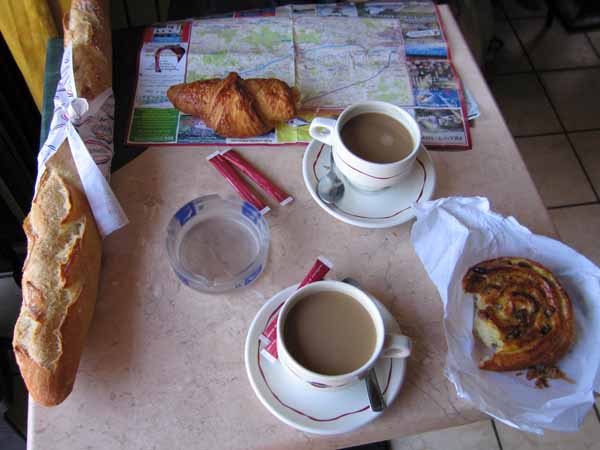
We were packed, fed (to the degree that a few spoonfuls of muesli counts as food) and back in town by 8 am.
The strip of vulgar cafés by the river was deserted except for a street sweeper or two, but at the far end there was a plain bar catering for the locals.
Keith scouted about and found a boulangerie, and we settled down to a second breakfast, so much better than the first.
The fact that it was not a tourist bar became obvious when Keith tried to pay with a €50 note and the proprietor had to search everywhere to find enough change, to the amusement of his lounging customers.
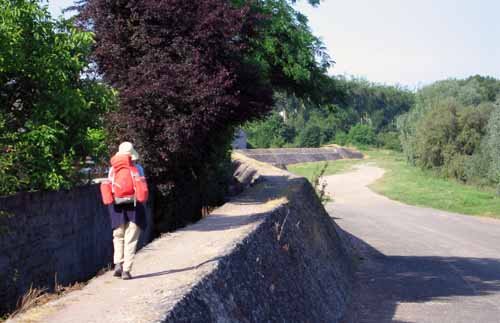
Out on the road again, we went along the top of the flood levée for a while, then on the side of the road, which had a grassy verge.
We took the GR3 up the slope at Lussault and found ourselves on a small road lined with well-tended gardens and wineries belonging to the Montlouis appellation.
Behind these was a low cliff of the soft rock known as tufa, where troglodyte houses from an earlier age were visible.
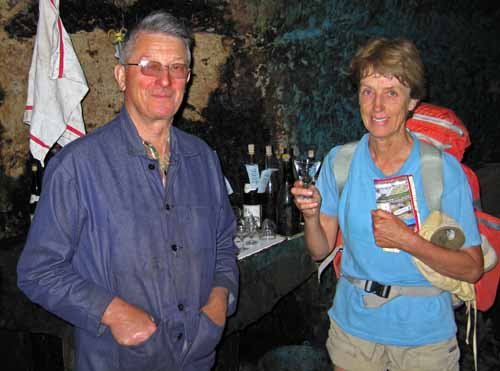
A man in overalls was digging in his vegetable patch, but when we admired it, he said it was only a hobby – his real job was as a vigneron. We took up his invitation to sample his wares and were led into a cold, dark room lit with a bare bulb, with barrels around the walls.
The only grape variety he grew was Chenin Blanc, but from that he made several styles of wine, all of which we tasted. He spoke in English and I in French and we got along very well.
He took us deep into the cliff to see his thousands of bottles stored in tunnels. Like many French people we have met, he had a gloomy view of the world, especially of the soft, decadent West which had forgotten how to do an honest day’s work.
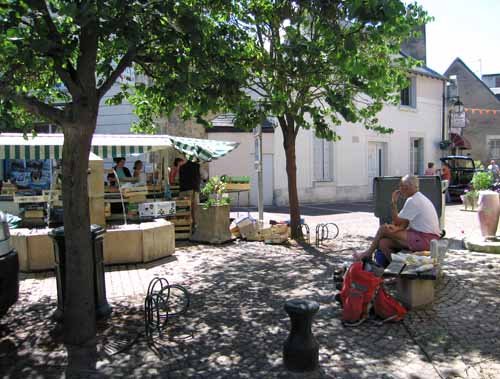
When we emerged it took us a while to get the chill out of our bones, but by the time we got to Montlouis a few kilometres further on, we were sweating again.
It was almost 12:30, when the shops close for lunch, and we had nothing but a baguette. A woman in the street said there was no épicerie, but she took us to a place that made all its own smallgoods, where we got a knobbly sausage and a slice of paté.
Having consumed this on a stone seat under a tree in the square, we followed it with coffee at a busy bar up the street.
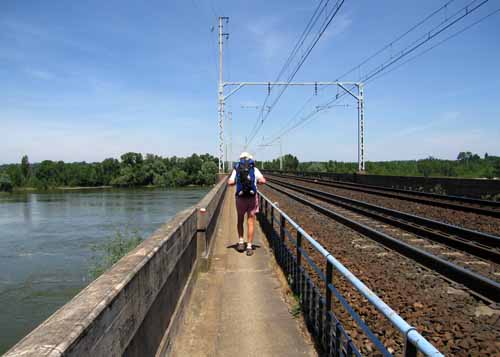
Descending to the main road, we came to the railway line which crossed the river on a metal bridge, with a footpath but no car access. We felt very pleased at this special treatment. At the far side all we had to do was slither down an embankment to reach a sandy path beside the water and continue pleasantly for half an hour to Vouvray. The GR did us proud here.
The first thing we came to was the camping ground, which was beside the river. The owner had a brother in Sydney, a fact that seemed to qualify us for extra favour, in the form of a folding table and two chairs.
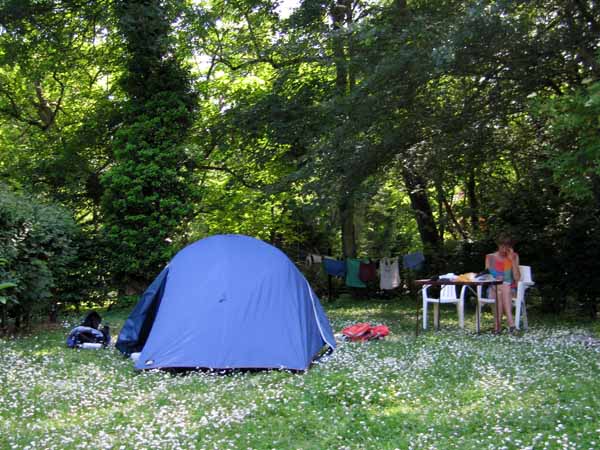
We felt complete campers, sitting up with these in our daisy-carpeted enclosure, with our washing strung between the branches.
The little town had an ancient church and a few shops and bars, kept alive by the highway snaking along the lower edge.
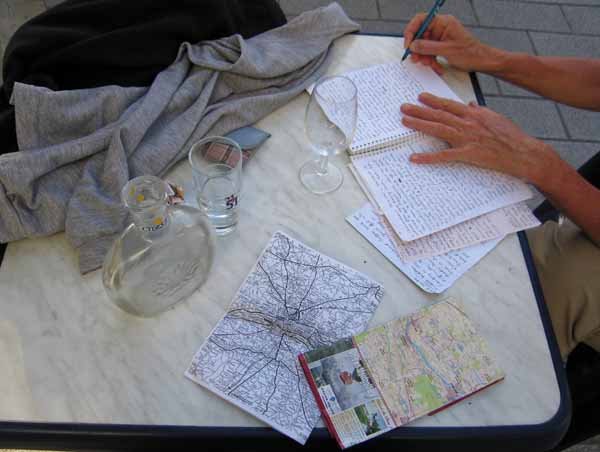
For apéritifs we sat on the terrace of the Bar Balzac in a side street, sprucely painted in blue and full of chattering people on their way home from work.
Then we presented ourselves at the large restaurant on the corner of the highway, Les Chalands, one of those old-established inns that we love so much, that have been serving the passing traveller for generations.
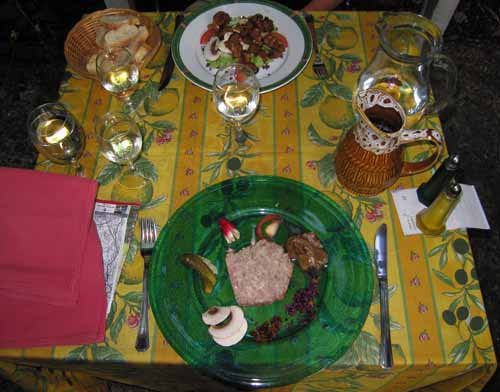
The dining room was spacious and elegant but we preferred to eat in the garden, as the night was warm. It was a convivial scene.
We started with a salad and rillettes (a local delicacy made of fatty shreds of pork), then I had guinea fowl and Keith had a whole fish.
Later the manager came round and lit some lamps amongst the trailing greenery, to impart “un peu de mystère” to the garden. We finished a delightful meal with cafés crèmes.
Previous day: Bléré to Amboise